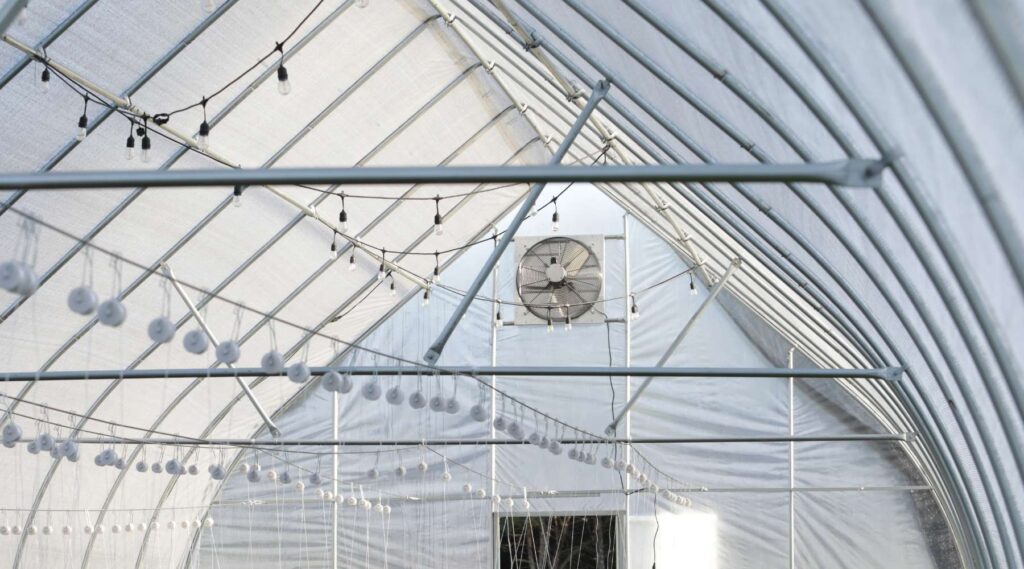VENTILATION
Greenhouse ventilation is a crucial aspect of maintaining a healthy and productive growing environment. Proper ventilation helps to regulate temperature, humidity, and carbon dioxide-to-oxygen ratios, which are all essential for plant growth. In this post, we’ll discuss the importance of greenhouse ventilation and the different types of ventilation systems available.
Greenhouse ventilation helps to optimize the environment of your structure throughout the year, extending your growing season and producing the highest yields at the best quality. A greenhouse ventilation system will:
- Regulate temperature: excess heat is a major plant killer, and many plants are quite heat sensitive.
- Control pests: air circulation will help ward off opportunistic pests that love to prey on sickly plants.
- Maintain fresh air levels: a greenhouse ventilation system will let air come in freely and circulate it throughout the entire structure.
- Aid in pollination: consistent air movement will help your plants pollinate, especially with self-pollinators like greenhouse varieties of tomatoes.
The right greenhouse ventilation system will depend on the specific growing requirements and environmental factors. Consider the following aspects when selecting a ventilation strategy:
- Greenhouse Size and Design: The size, shape, and layout of your greenhouse will impact airflow patterns and ventilation effectiveness. Larger greenhouses may require more powerful fans or additional vents to maintain proper air circulation.
- Climate: Consider your local climate when selecting a ventilation system. Greenhouses in hot or humid regions may require more aggressive mechanical ventilation methods, while those in cooler or drier climates may be better suited for natural ventilation.
- Plant Needs: Different plant species have varying temperature, humidity, and airflow preferences. Consider the needs of your specific crops when designing your ventilation strategy.
- Budget: Factor in the initial costs of equipment and installation, as well as the ongoing energy expenses associated with mechanical ventilation systems.
It is recommended that your total fan capacity should be 2 times the floor area of your greenhouse. Fan capacity is measured in cubic feet per minute (CFM) of air moved. So, in a 30′ x 100′ greenhouse, the fan capacity should be 30′ x 100′ x 2 = 6000 CFM.
- 12” Fan – 900 High CFM
- 24” Fan – 4450 High CFM
- 36” Fan – 8860 High CFM

